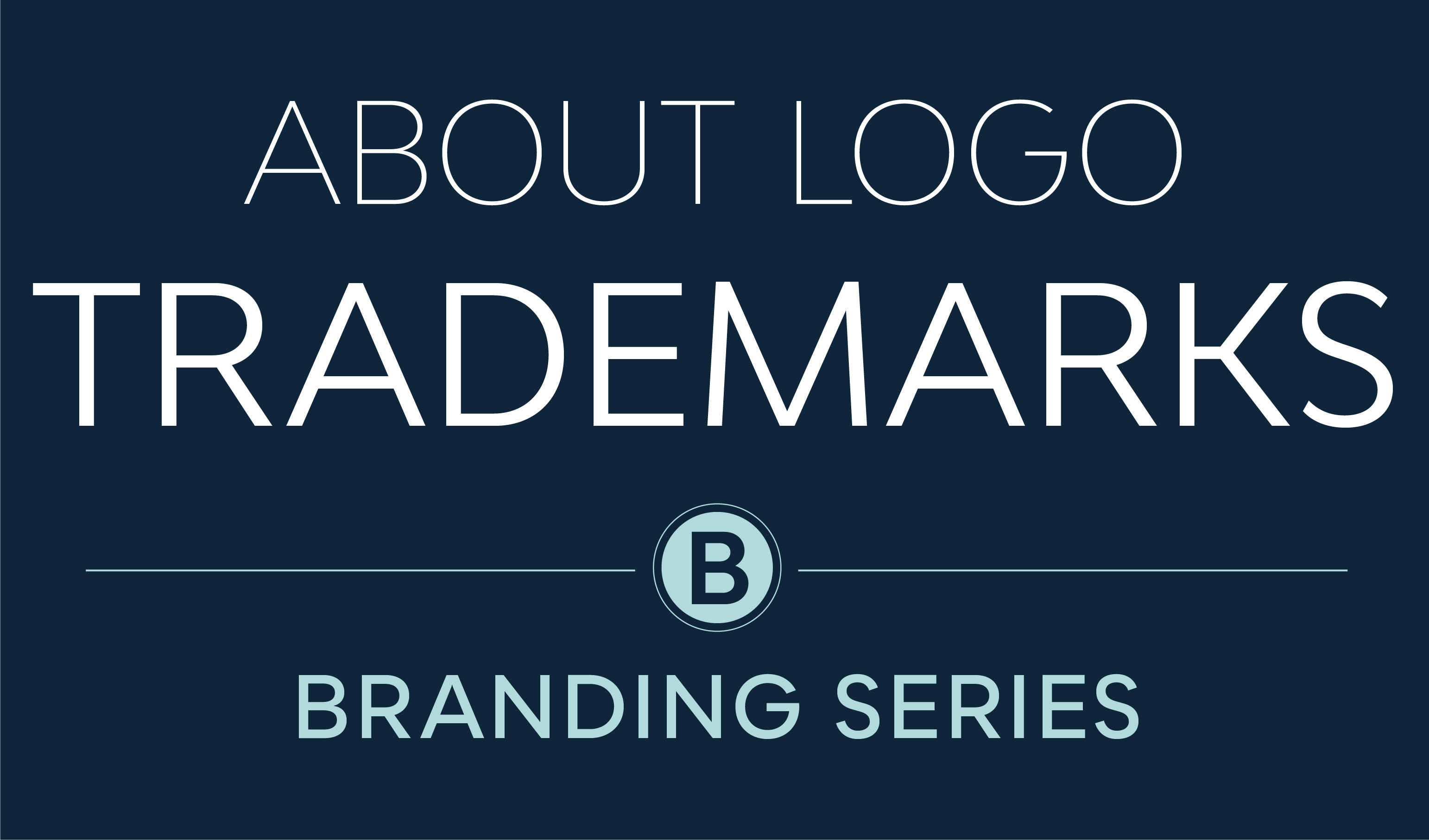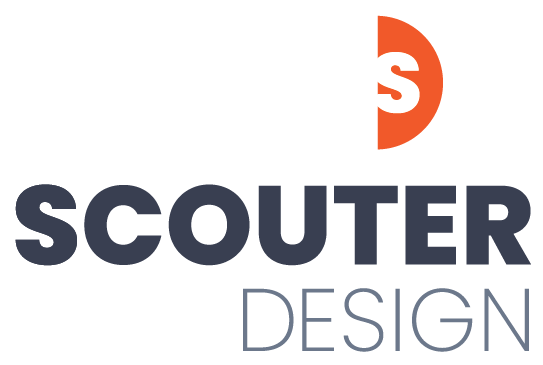
Logos are a major identifier for our brand, so going through the process of vetting and registering it will provide protection by not only making sure that it does not infringe on someone else's logo but that others don't create a similar version of ours. Similar logos can create brand confusion with our customers and that can negatively impact our business. Dana Dickson, Trademark Attorney, discusses with us the benefits of trademarking a logo.
TERRI:
What is a trademark registration?
DANA:
A trademark registration is protection for your trademark – that could be a logo, a slogan, a business name, or a product name. The mark’s purpose is to identify the source of goods or services. We use trademarks as consumers all the time to help us find our favorite products. When you start using a mark as a business owner, its purpose is to help distinguish you from the competition. You want customers to find you easily; you don’t want them to get confused and buy things from your competitors thinking those things are coming from you.
TERRI:
What are the benefits of getting one?
DANA:
There are lots of benefits to registration, but I’ll focus on three main ones. The first is the scope of protection. When you start using your mark in the real-world marketplace, you immediately have common law trademark rights. They’re better than nothing, but they only protect use of your mark throughout the geographic region where you’re using it. The biggest difference between having a federal trademark registration instead of just common law rights is that with the federal registration, your mark is protected throughout the entire U.S. So even if you’re only using that mark in two or three states in one corner of the country right now, if you have that federal trademark registration, you have the exclusive right to use that mark with your goods or services in every state. If you’re interested in e-commerce and being able to sell throughout the U.S., or expanding into other states in the future, this is really important. And if you’re planning to sell your business someday, buyers will want to know whether they are able to expand.
The other main benefit is the deterrent effect. Once you have a federal trademark registration, you can start using the circle R symbol with your mark. And once you file a federal trademark application, your mark is in the U.S. Patent and Trademark Office (USPTO for short) database. It’s going to turn up in searches. So, hopefully, if someone else was thinking about using your mark or something similar, and they saw that circle R beside your mark or they saw your mark come up in their search, then they’ll back off and come up with something else instead. And that saves you time and money in terms of trying to police use of your mark.
Another important practical benefit is that a U.S. federal trademark registration gives you access to enrollment in the Amazon Brand Registry in the U.S.

SIDE NOTE FROM TERRI: The Amazon Brand Registry provides codes to enrolled businesses that appear on the boxes shipped to consumers. The consumer can scan the code to make sure that the goods they received are not counterfeit goods and come from the legitimate business.
TERRI:
Based on your experience working with clients, do you have any tips that can help them avoid potential issues with using their new logo?
DANA:
One of the most important things is to make sure your own all of the rights necessary to use your design as a logo for whatever you want and to register that design as a mark with the USPTO. There are lots of websites that offer designs for free or for very little money. People download these designs often without paying much attention to the terms and conditions, they start using these designs as their logos, their businesses grow, and they want to register these designs as their marks. They come to me, and when I look at the terms and conditions, there’s a problem. I’ve seen several of these agreements where you don’t get exclusive use of the design, meaning you can’t stop other people from using it as their logo, and you agree that you’re not going to try to register it as a trademark.
"They come to me, and when I look at the terms and conditions, there’s a problem. I’ve seen several of these agreements where you don’t get exclusive use of the design, meaning you can’t stop other people from using it as their logo, and you agree that you’re not going to try to register it as a trademark."
So maybe it felt great on the day of the download when you thought you were getting something for nothing. But you weren’t: you gave up on day one the ability to register this design as your trademark and all the benefits that come along with that. You gave up being able to stop others from using it. When you think about the strongest trademarks in the world – the Nike swoosh or the Apple icon or the Starbucks siren – these are so powerful because they point uniquely to this one source. You may not have world domination in mind, but you still want your logo to point uniquely to you. And if you’ve agreed that anyone else in the world can download it and use it as their logo, then you don’t have that.
Whoever you partner with to create your logo, make sure you’re both clear about what you get in exchange for your money. Your trademarks can become some of the most valuable assets that your business owns. So, you want to take the time to get this right from day one.
TERRI:
I agree. A designer should provide you with a contract at the beginning of the design process that gives you full rights to your new logo. You should review this contract carefully and address any questions before starting the design process.
TERRI:
Is vetting a logo to make sure it's not infringing on another one necessary and should we hire a lawyer to do that? Is searching the USPTO database on our own enough?
DANA:
Yes, you absolutely want to vet your logo before using it. It’s a relatively small financial investment (usually less than a thousand dollars) upfront that can save you thousands or tens of thousands of dollars and some big headaches down the line. It’s really heartbreaking for a small business owner to get a cease-and-desist letter after they’ve spent thousands of dollars putting their logo on their website, company vehicles, business signage, clothing they had made for their employees, or product packaging. And now they not only have to scramble to come up with a new logo, but they also have to pay for removing the old logo from all of those places and replacing it with the new one. And they have to re-educate their customers about their re-brand and hope that the customer loyalty transfers over to the new mark. It’s very time consuming and expensive.
I understand that entrepreneurs and small business owners have to cut corners sometimes, but your trademark clearance search is not the place to cut corners. Back when I reviewed trademark applications at the USPTO, I often had to refuse applications, and I received many calls from applicants who were upset because before they filed, they did a search on the USPTO website and “got no hits,” and thought they were in the clear. There is a free tool called TESS on the USPTO website. Sometimes people search for their marks with this tool. But many times, they’re not finding all of the marks that they need to see, and they may think what they see is different enough from their mark that it won’t be a problem when, from the USPTO’s perspective, it is a problem.
While I think it’s great that the USPTO provides this search tool for free to the public, it’s important to be clear about the limitations of this tool. TESS is not Google. If you search for wording that is a near-miss for a registered mark, TESS is not going to ask, “Did you mean...?” TESS is going to search what you tell it to. Nothing more. Nothing less. Your search needs to turn up not just wording that’s identical to your mark but also wording that is similar in appearance but that has slightly different spellings and wording that is spelled very differently but that sounds the same. You also need to be able to find marks that have the same “overall commercial impression” as your mark – meaning that both marks put the same overall image or concept into your head. The classic example is BLUE NUN v. BLUE CHAPEL. These marks were found to be too similar. A search in TESS that would turn up all of those things is not easy to do. Something most people don’t realize is that anyone hired into the Trademark Office spends many hours in a classroom learning search techniques and how to analyze the results because a proper search analysis is one of the hardest parts of trademark law.
The other issue with TESS is that it’s only telling you what applications have been filed or what registrations have been granted on the U.S. federal trademark register. It doesn’t tell you about state trademark registrations, business name registrations, or any of these other key indicators that someone else might have started using your mark before you did and might have common law rights in that mark. I strongly recommend getting an attorney to perform a search that picks up all these uses. And make sure that this attorney understands trademark law! One of the questions I recommend that people ask before hiring an attorney for this type of work is: “What percent of your work is trademark law?” You want someone who does trademark searches and filings all the time and has many hours of practice in this. You don’t want to subsidize your lawyer’s on-the-job training. And you don’t want your lawyer making mistakes that cost you extra money or make the application process months or years longer than it has to be.
"I strongly recommend getting an attorney to perform a search that picks up all these uses. And make sure that this attorney understands trademark law! One of the questions I recommend that people ask before hiring an attorney for this type of work is: “What percent of your work is trademark law?” You want someone who does trademark searches and filings all the time and has many hours of practice in this."
Dana, this information is invaluable for designers and businesses alike. I hope they bookmark this article and share it with others. Thank you so much for answering our questions today!
Stay tuned next week for PART TWO where Dana answers our questions regarding the trademarking process.

TO CONNECT WITH DANA:
LinkedIn: https://www.linkedin.com/in/danadicksonlaw
Website: https://www.danadicksonlaw.com
RESOURCES:
https://www.uspto.gov/trademarks/basics/what-trademark
https://www.danadicksonlaw.com/about-the-attorney
https://brandservices.amazon.com/
© Scouter Design
Follow me on Facebook: @ScouterDesign | LinkedIn: ScouterDesign

